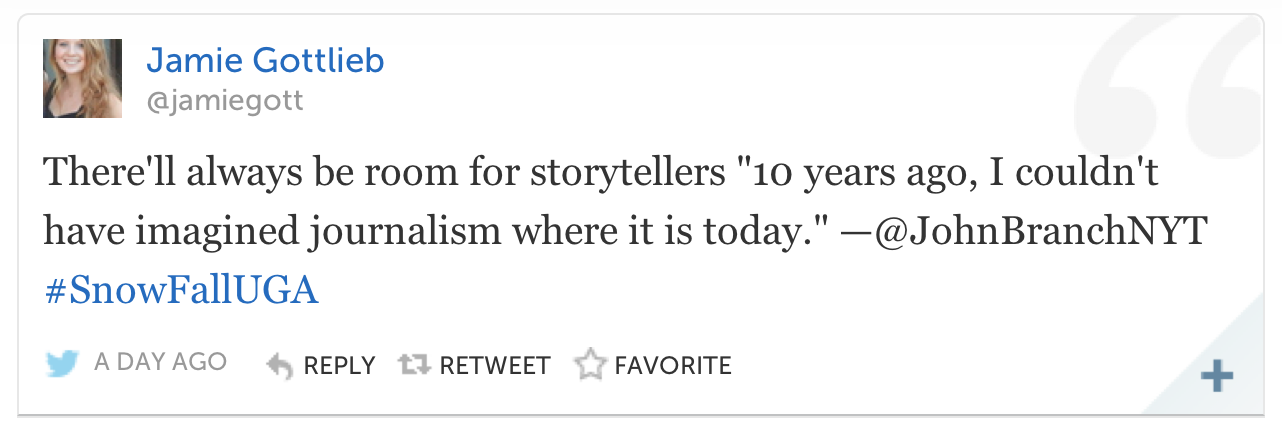“Snow Fall,” the widely celebrated New York Times multimedia narrative on a deadly avalanche in Washington State, won a Peabody this week (and would later win the Pulitzer) for being “a spectacular example of the potential of digital-age storytelling.” The project packaged a six-part story by former Pulitzer finalist John Branch, accompanied by interactive graphics, video and character bios of the expert skiers and snowboarders caught in the danger. It also marked the Times’ foray into the e-publishing of long-form singles. [Ed note: The Times package was considered so successful, the paper created a new multimedia-narratives position for project editor Sam Sifton. Other reactions have varied. A July 17 piece in @Medium: "...Almost every example of snowfalling that I’ve seen in action puts reading second to the razzle-dazzle. Can you even remember what happens in Snowfall? Do you remember who wrote it? What did the multimedia help you do?"]
"Snow Fall" opens with an otherworldly video loop of snow blowing across a mountain slope—functioning as a photo that moves—and Branch's action-oriented lede:
This week, Branch walked an audience through the project—conception to clicks—at the University of Georgia's Grady College of Journalism and Mass Communication. (For the thread, search #SnowFallUGA on Twitter.) Click through for Storyboard's Storified version of Branch's talk about the reporting, organization, buildout, intention and editing behind one of the most ambitious storytelling projects in Times history:
"Snow Fall" opens with an otherworldly video loop of snow blowing across a mountain slope—functioning as a photo that moves—and Branch's action-oriented lede:
The snow burst through the trees with no warning but a last-second whoosh of sound, a two-story wall of white and Chris Rudolph’s piercing cry: “Avalanche! Elyse!”
The very thing the 16 skiers and snowboarders had sought — fresh, soft snow — instantly became the enemy. Somewhere above, a pristine meadow cracked in the shape of a lightning bolt, slicing a slab nearly 200 feet across and 3 feet deep. Gravity did the rest.
Snow shattered and spilled down the slope. Within seconds, the avalanche was the size of more than a thousand cars barreling down the mountain and weighed millions of pounds. Moving about 7o miles per hour, it crashed through the sturdy old-growth trees, snapping their limbs and shredding bark from their trunks.
The avalanche, in Washington’s Cascades in February, slid past some trees and rocks, like ocean swells around a ship’s prow. Others it captured and added to its violent load.
Somewhere inside, it also carried people. How many, no one knew.
This week, Branch walked an audience through the project—conception to clicks—at the University of Georgia's Grady College of Journalism and Mass Communication. (For the thread, search #SnowFallUGA on Twitter.) Click through for Storyboard's Storified version of Branch's talk about the reporting, organization, buildout, intention and editing behind one of the most ambitious storytelling projects in Times history:



